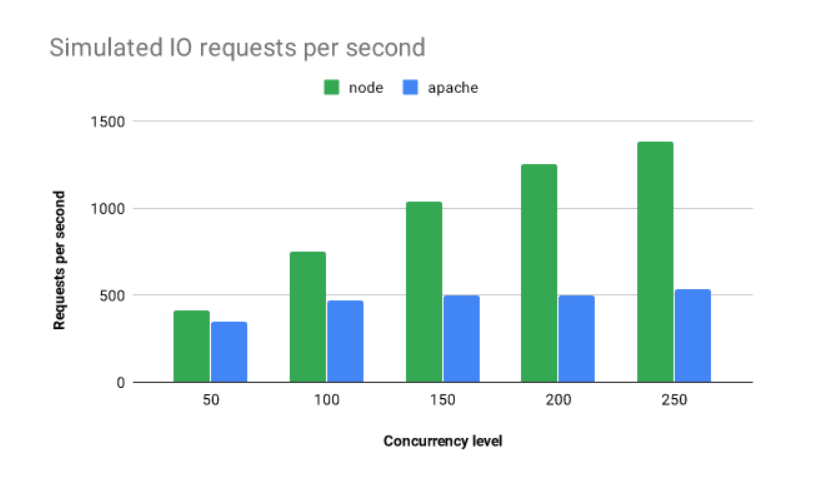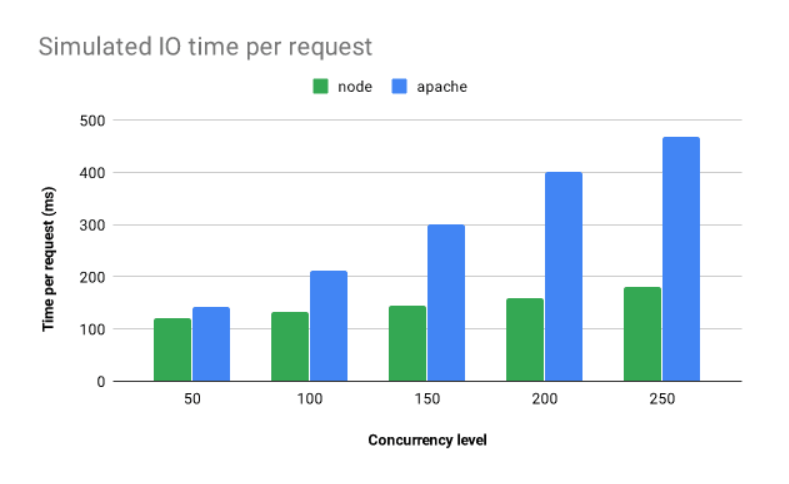I can't recall a time when an individual shook up the hornets nest occupied by groomers and pedophiles in Satan's dwelling of Silicon Valley like Elon Musk has. Over the past few days, it's been all deep-state hands-on-deck to push the narrative that the Earth will stop spinning if Musk can close on Twitter, and that it will "end democracy."
Because of the demonic reactions to what should otherwise be a notable purchase, people are curious about what's in the belly of Twitter beast that's causing panic at such a level that even normies are noticing. What are they hiding?
A few people sent me this article from The Conservative Treehouse regarding large-scale social media profitability because I've been in the software development field for a long time, and I also owned a large data center for a tech company I started and sold some years back, so I have some insight on this topic. I'll hit this last.
I believe Twitter has been lying about their financials for years, and have been grossly misrepresenting their user metrics in a major way. They say they have ~217mm DAU, according to their 2021Q4 numbers (PDF). For their US numbers, they report 38mm.
I believe Twitter has about a 2-1 bot ratio, based on some math and many-a-conversation with some smart tech folks, as well as my own understanding of bots at a technical level because I've built them as well as fought them and know how difficult those pesty little effers can be. I think the real number for the United States is closer to ~12mm DAU, and likely lower.
Not plausible? Answer this: how many people in your circles are on Twitter, or actively use it? Most of those who do would reference someone who owns a business and just wanted a social media presence, but when was the last time they tweeted? Some of you know someone active on Twitter, but most of you don't.
How many of you know someone on Facebook or Instagram? See the difference?
Twitter has been defrauding investors, advertisers, and the government for years, in my opinion. I think that's one reason for the panic within Twitter, amplified by the NPCs, bots, and fake news media.
To something I'm happy about, Elon Musk spoke about open-sourcing Twitter's algorithm at a Ted talk a few days ago:
If you've been reading my articles for a while, you know I've been screaming for the open-sourcing of algorithms from the rooftops, and Elon Musk is the FIRST and only technically-credible person I've heard to echo what I've been saying, up to and including even calling it a "black box", as I have:
The solution is to open-source their black-box technology. The tax payers paid for it via intelligence agencies and government-backed dollars, so we own it. It's ours.
Also from that article, I noted how big of a deal this is for Silicon Valley (context was a poll he posted about the algorithm):
With absolute certainty, this is the scariest thing the Silicon Valley web companies have EVER seen, and that's not an exaggeration, with the responses out of almost 1mm people overwhelmingly in support. This is THE way to bring these platforms to their knees and force them to compete within the bounds of the free market.
There's no putting this genie back in the bottle.
Someone is finally talking about open-sourcing the algorithms and has the balls to punch through. The world changes if that happens.
Onto the article by "The Conservative Treehouse". He did a lot of research into the topic of large-scale profitability, but as someone who built and owned a data center with many servers and expensive equipment, and knows the ins-and-outs of them technologically and operationally because my life depended on it, I had a few thoughts on his excellent article.
Twitter is not a platform built around a website; Twitter is a platform for comments and discussion that operates in the sphere of social media. As a consequence, the technology and data processing required to operate the platform does not have an economy of scale.
There is no business model where Twitter is financially viable to operate…. UNLESS the tech architecture under the platform was subsidized.
I disagree. I think he's absolutely correct in terms of Twitter specifically, and how it's dependent on daddy government to survive because they're run by gender-confused lunatics, but in general, an operation with millions of users that does what Twitter does can absolutely be profitable.
More users should generate more revenue and increase margins. Improving technology and smart engineering make this possible.
Unlike websites and other social media, Twitter is unique in that it only represents a platform for user engagement and discussion. There is no content other than commentary, discussion and the sharing of information – such as linking to other information, pictures, graphics, videos url links etc.
In essence, Twitter is like the commenting system on the CTH website. It is the global commenting system for users to share information and debate. It is, in some ways, like the public square of global discussion. However, the key point is that user engagement on the platform creates a massive amount of data demand.
Within the systems of technology for public (user engagement) commenting, there is no economy of scale. Each added user represents an increased cost to the operation of the platform, because each user engagement demands database performance to respond to the simultaneous users on the platform. The term “simultaneous users” is critical to understand because that drives the cost.
According to the Wall Street Journal, Twitter has approximately 217 million registered daily users, and their goal is to expand to 315 million users by the end of 2023. Let me explain why things are not what they seem.
When people, users, operate on a tech platform using the engagement features, writing comments, hitting likes, posting images, links etc, the user is sending a data request to the platforms servers. The servers must then respond allowing all simultaneous users to see the change triggered by the single user.
Example: when you hit the “like” button feature on an engagement system, the response (like increasing by one) must not only be visible to you, but must also be visible to those simultaneously looking at the action you took. If 100,000 simultaneous users are looking at the same thing, the database must deliver the response to 100,000 people. As a result, the number of simultaneous users on a user engagement platform drives massive performance costs. In the example above, a single action by one person requires the server to respond to 100,000 simultaneous users with the updated data.
This is where engineering comes into play. I'll give you an example that I hope doesn't put you to sleep, as he parallels his website with Twitter.
His site is (very likely) served by an Apache web server (no, not this). When an HTTP request hits his port 443 (https) it's handled by the server and then handed off to WordPress where the request is processed and a response object is created and loaded up with the data it needs. The response is then slapped on its ass and sent back down the wire to the website visitor's browser.
For each inbound visitor's request, this happens one at a time, which is called a "blocking I/O". If a bunch of requests come in at once, they have to wait their turn for the previous request to finish, just like taking a ticket at the deli. If a request takes 30ms to complete, the next one in line will be waiting 30ms, and the one behind that request in line 60ms, etc.
Envision this like a line at a nightclub, where the doorman lets clubbers in one at a time.
If it's not busy, you won't really notice or care, but if you're trying to enter one of the most popular nightclubs in town, you're going to be waiting while your girlfriend bitches at you that her heels are killing her. In the web tech world, this is mitigated with smart engineering like caching, load balancing, etc., but put all of that aside for the analogy.
I took us on a scenic route about how a typical website processes inbound HTTP requests because I want to set up the point about smart engineering to solve hard problems.
What if we're wanting to build a super-fast high-scale application that does something like Twitter? How can we process visitor requests faster to get us closer to a "real time" feel?
What if we engineer something different and take that "waiting in line" bottleneck out of the loop altogether? Instead of the blocking I/O architecture, how about an asynchronous I/O, where each request is handled as fast as they hit the port?
Back to the nightclub analogy, instead of waiting one at a time, we open up the doors and let everyone walk in as soon as they arrive. On many projects for which I needed fast responses and high-scalability, I used a architecture called Node.
What's the speed improvement? Here are a few benchmarks between Apache and Node (from this article):

In fact, NodeJS was able to increase the managed requests per second in accordance with the increasing of concurrency level.

The response time is almost the same with the lowest concurrency level, but with 250 concurrent requests, NodeJS was five times faster than Apache.
With the nightclub analogy, it's the same building, same music, and same everything. We simply changed the way we let the clubbers in the door; everyone is served faster and I get my girlfriend drunk sooner. With the web servers, we altered the way we handle the inbound requests, serving them much faster with the exact same servers and network.
The point I'm making with this blocking vs non-blocking example is even though something like concurrent users seems like it would significantly drive up costs, that's not necessarily the case (assuming you're making money with the users). Smart engineering solves a lot of hard problems. Every high-scale platform uses this non-blocking I/O (in various capacities) that wasn't a thing 15 years ago, or even mature enough to use on such big projects 10 years ago.
Here's another example: databases. His website (likely) uses MySQL, which is lighting fast on its own. Database engineering and technology is science fiction when you get into it, but for the context of a large-scale platform like Twitter, how do you keep all of these updates in real time and available to everyone?
This is a whole other boring technical topic and I'll avoid it here, but consider a database that isn't how you envision it with rows of fields in tables. How about instead of the database being kept on a hard drive, like his website and this one here, what if all of the tweets and likes were kept in memory? That's how large-scale platforms do it nowadays, and it's so fast that it's hard to conceptualize.
This database in-memory concept is the difference between thinking about someone's phone number versus going to your contacts to look it up. Another example of incredible engineering that drives down costs.
When you own a data center, you quickly learn how important cooling is. Those machines get hot, and heat kills server performance; the more servers to handle more users, the hotter it gets.
How does engineering and technology fight this problem? One example, how about submersing the equipment in a special liquid? Power? If the government would do the opposite and get out of our way and let us stand up small nuclear reactors, then power becomes essentially free. That would solve A LOT of problems.
To put a bow on my point, I don't agree that a platform like Twitter can't make money, sustain operations, and grow as more users come aboard.
However, for Twitter specifically, I do agree 100% that if they were ripped from the intelligence agencies tit and not subsidized by government, they'd cease to exist that day.
As a consequence, when a commenting platform increases in users, the cost not only increases because of that one user, the cost increases because the servers need to respond to all the simultaneous users. Using CTH as an example, 10,000 to 15,000 simultaneous commenting system users, engaging with the servers, costs around $4,500/mo.
That many users is a big deal for a publisher, as I can't imagine that many readers coming to read my stuff. I'd have to put on pants and comb my hair. But technologically, it's not a big deal at all. Ultimately, it's an engineering issue; I'm certain technologically he's good on servers.
Seeing stuff like this drives me nuts, where this guy with a huge audience thinks he's pushing bounds of everyday tech, when in reality, he's not.
Let's say he needs a souped-up server. I randomly picked Epik (because I know they're unwoke). Check out their Dedicated Servers Professional package, which is light years beyond what anyone would need for his traffic. Or, move up a level and check out their Enterprise package.
I'd REALLY love to know what that $4,500 is for. If it's covering a part-time tech guy, then that's OK, and someone with his traffic should have that anyway, not because it's big deal tech-wise, but that site's a moneymaker, and if it goes down, he's losing money and someone needs to get it up pronto.
I'll spare my rant I've done several times on how us conservatives can't seem to get our tech situation together. It's a real problem on our side, mostly security.
This is why most websites, even big media websites, do not have proprietary user engagement, i.e. commenting systems. Instead, most websites use third party providers like Disqus who run the commenting systems on their own servers. Their commenting systems are plugged in to the website; that defers the cost from the website operator, and the third party can function as a business by selling ads and controlling the user experience. [It also sucks because user privacy is non existent]
Big media websites don't have commenting because they got tired of conservatives coming in and destroying their libtard idiocy. Remember, there's WAY MORE of us than them.
He's 100% correct about the lack of privacy and tracking. As a side point, Disqus has "real-time" functionality and is a large scale platform. They sell advertising and other premium services.
I agree with everything he said there.
The key to understanding the Twitter dynamic is to see the difference between, (a) running a website, where it doesn’t really matter how many people come to look at the content (low server costs), and (b) running a user engagement system, where the costs to accommodate the data processing -which increase exponentially with a higher number of simultaneous users- are extremely expensive. Twitter’s entire platform is based on the latter.
I'd correct this paragraph to say a platform like Twitter is ENGINEERED to handle user engagement, as opposed to CMS that's engineered to manage and dynamically present content, or a commenting system that's ENGINEERED to do what it does.
A Ferarri is engineered to be fast; a 4x4 Jeep is engineered to go off-road. Different vehicles engineered for different functions. He's seeing all of this through the lens of his own website.
With 217 million users, you could expect 50 million simultaneous users on Twitter during peak operating times. My back of the envelope calculations, which are really just estimations based on known industry costs for data performance and functions per second, would put the data cost to operate Twitter around at least $1 billion per month (minimum). In 2021, Twitter generated $5.1 billion in revenue, according to the Wall Street Journal.
I'd really like to see his calculations and assumptions here. He's really underplaying how good engineering and the technology are, but I will agree that technology was likely birthed by engineers from the intelligence agencies.
Regardless, good article and this guy is very smart in my opinion. I'd love to see more of his research.






